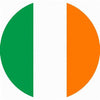Your cart is empty
What is an AAC device?
Medi talker is a fictional product, but real technology like it helps millions of people communicate every day. Speech generating devices are a form of AAC (augmentative and alternative communication). People with disabilities like cerebral palsy can control these devices with their hands or even their eyes by way of infrared light that tracks their gaze. Compatible communication software allows the person using the device to share their mind with the world through a digital voice of their choosing.
What is cerebral palsy?
Cerebral palsy is the most common motor disability among children. Infants can acquire the condition due to abnormal brain development or damage to their developing brain. Many people with cerebral palsy experience dysarthria, or difficulty with speech. One in four are non-speaking. While some people with a cerebral palsy diagnosis also have cognitive impairments, many do not.
How do AAC devices help people with cerebral palsy?
AAC devices don’t just help people with cerebral palsy communicate. Combined with the supporting software, this technology can also empower individuals with CP to access computers, browse the internet and control entertainment and their home environment. Young children with CP can use their AAC device to learn to read and write. With the power to express themselves and connect with the world, people with CP have achieved amazing things.
How can I get started with AAC?
If you’re a speech therapist or other professional who serves people with cerebral palsy, you can benefit from following an established pathway to AAC success. Timely support and resources are available whenever you’re ready to begin.
Meet some dynamic people with cerebral palsy
Learn how AAC has played a part in their success.












